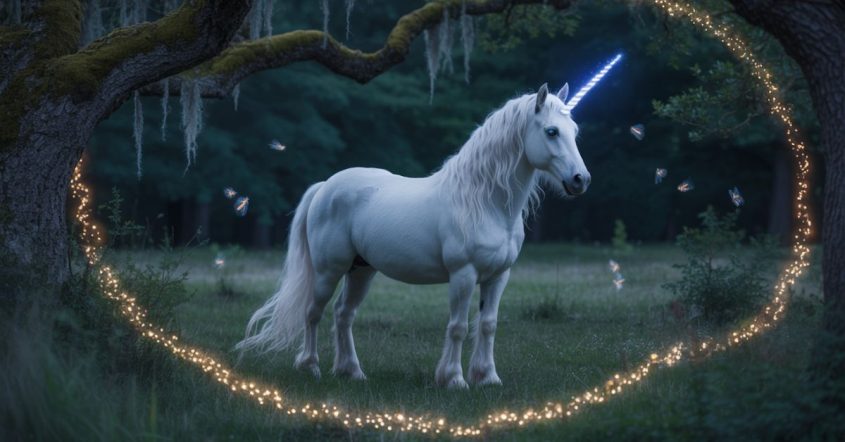Unicorns have fascinated people for thousands of years. They are often described as beautiful, horse-like creatures with a single horn on their foreheads. Whether seen as a symbol of purity, power, or magic, unicorns have remained popular in stories, legends, and even modern culture. But where did these stories come from? Are there real animals behind the myth? And can we still find a unicorn today? Let’s explore the history, symbolism, and surprising places where unicorns have appeared.
Ancient Origins: Myths & Civilizations
The story of unicorns goes far back into ancient history. Some of the earliest images of unicorn-like animals come from the Indus Valley Civilization, which existed around 3000 BC. Ancient seals from this area show a creature with one horn standing sideways. Historians believe this was more a symbol than a real animal, but it shows how old the unicorn idea is.
Greek and Roman writers also talked about unicorns. A Greek doctor named Ctesias wrote about a wild animal in India with one horn. He called it a “monokeros,” which means “single-horned.” His story described a creature like a horse or a wild ass with a purple head and a white body. Roman authors, such as Pliny the Elder, continued to write about similar animals. Though these writers never saw a unicorn themselves, their descriptions spread across the ancient world.
Unicorns even appear in the Bible. Some older translations mention a creature called “re’em,” which scholars believe was a strong animal. Later versions translated this word as “unicorn,” adding to the legend’s religious meaning.
Medieval Europe: Symbolism & Bestiaries
During the Middle Ages, unicorns became symbols of purity, innocence, and religious truth. European bestiaries (books about animals) described unicorns in detail. These books often included a story about how a unicorn could only be caught by a virgin maiden. The unicorn would lay its head on the maiden’s lap, making it easy to capture. This became a popular Christian symbol representing Christ’s purity.
Kings and nobles believed unicorn horns, called “alicorns,” had magical powers. They were said to protect against poison and illness. Many royal courts owned alicorns, but we now know these were actually narwhal tusks from the Arctic. Still, their value was so high that people paid huge amounts of money for them.
Unicorn images also appeared in tapestries, paintings, and carvings. The famous series “The Hunt of the Unicorn” shows knights capturing the magical creature. These works of art helped keep the unicorn legend alive for centuries.
Unicorns Across Cultures: East & Persia
The unicorn isn’t just a Western legend. Other cultures have their own versions of unicorn-like animals.
In China, there is the qilin, a creature with a single horn, deer-like body, and dragon scales. The qilin is gentle and wise. It appears during the rule of a good king or when a great person is born. Instead of being hunted, the qilin is respected and honored.
In Persian stories, there is the karkadann. This creature resembles a rhinoceros with magical traits. It was feared but also believed to have healing powers. Travelers and traders brought tales of the karkadann to Europe, mixing with the unicorn legend.
These different stories show that the idea of a one-horned creature appears all over the world, not just in Europe. Each culture shaped the unicorn in its own way.
Real “Unicorns” in Nature
Although no real unicorns have ever been found, there are animals that might have inspired the stories.
One example is the Saola, sometimes called the “Asian unicorn.” This rare animal lives in the forests of Vietnam and Laos. It has two horns, but they are so close together that they can look like one from a distance. The Saola is very shy and was only discovered by scientists in 1992. Even today, it’s rarely seen in the wild.
Another interesting creature is the Siberian unicorn, known as Elasmotherium. This was a large prehistoric animal that looked like a giant rhino. Fossils show it had a huge horn on its head. For a long time, scientists thought it went extinct long before humans appeared. But new discoveries suggest it may have lived as recently as 39,000 years ago, meaning humans could have seen it.
Narwhals, sea animals with long spiral tusks, also played a part. In the past, people sold narwhal tusks as “unicorn horns,” especially in Europe. Their mysterious appearance helped keep unicorn stories alive.
Modern Sightings: Folklore or Hoax?
In modern times, some people still claim to see unicorns—or something like them.
In 2023, a camera in Petrified Forest National Park in Arizona captured a strange animal with what looked like one horn. The image went viral, and many wondered if it was a unicorn. Experts believe it was likely a deer with a rare birth defect, but the mystery excited many.
Other strange reports include a skull found in Cornwall, UK, claimed to be from a unicorn. It was likely a hoax or an old marketing trick, but it caught people’s attention.
In Toronto, a creative marketing campaign involved setting up a “unicorn hotline.” People claimed to have seen unicorns around the city. It was part of a promotional event, but it shows how much people still enjoy the idea.
Fantasy & Pop Culture
Unicorns are more popular than ever in today’s world. They appear in books, movies, toys, and games. Children love them for their magical colors and kind nature.
In video games like Hogwarts Legacy, players can find unicorns in enchanted forests. These digital unicorns keep the myth alive for younger generations. Shows like My Little Pony and movies like The Last Unicorn also bring these creatures to life in new ways.
Cities even hold events and art festivals based on unicorns. For example, Bristol hosted “Unicornfest,” where artists created colorful unicorn statues across the city. These events bring magic and fun into everyday life.
Where to “Find” a Unicorn Today
So, can we really find a unicorn today? Not in the wild—but there are places where the unicorn story is alive and well.
- Museums: Some museums have narwhal tusks and unicorn tapestries. These show the history of the legend.
- Zoos and Conservation Parks: You might not find a unicorn, but you can see rare animals like the Saola or rhinoceros, which may have inspired the myths.
- Festivals: Events like Unicornfest or fantasy fairs often include unicorn-themed art, costumes, and games.
- Books and Films: Libraries and cinemas continue to keep the legend alive through magical stories.
Even if unicorns aren’t real animals, their spirit lives on in creativity, imagination, and history.
Conclusion
The search for unicorns has led people through ancient myths, religious texts, scientific discoveries, and modern culture. From the dusty seals of the Indus Valley to digital forests in video games, the unicorn continues to capture hearts and minds. Whether as a symbol of purity, mystery, or hope, unicorns remind us that magic lives where imagination thrives. So while you may not find a unicorn in the forest, you can certainly find one in your dreams, in stories, or even in a museum’s quiet corner.
Unicorns may never have walked the Earth as we imagine them, but their legend is very much alive—and that’s something just as magical.
















